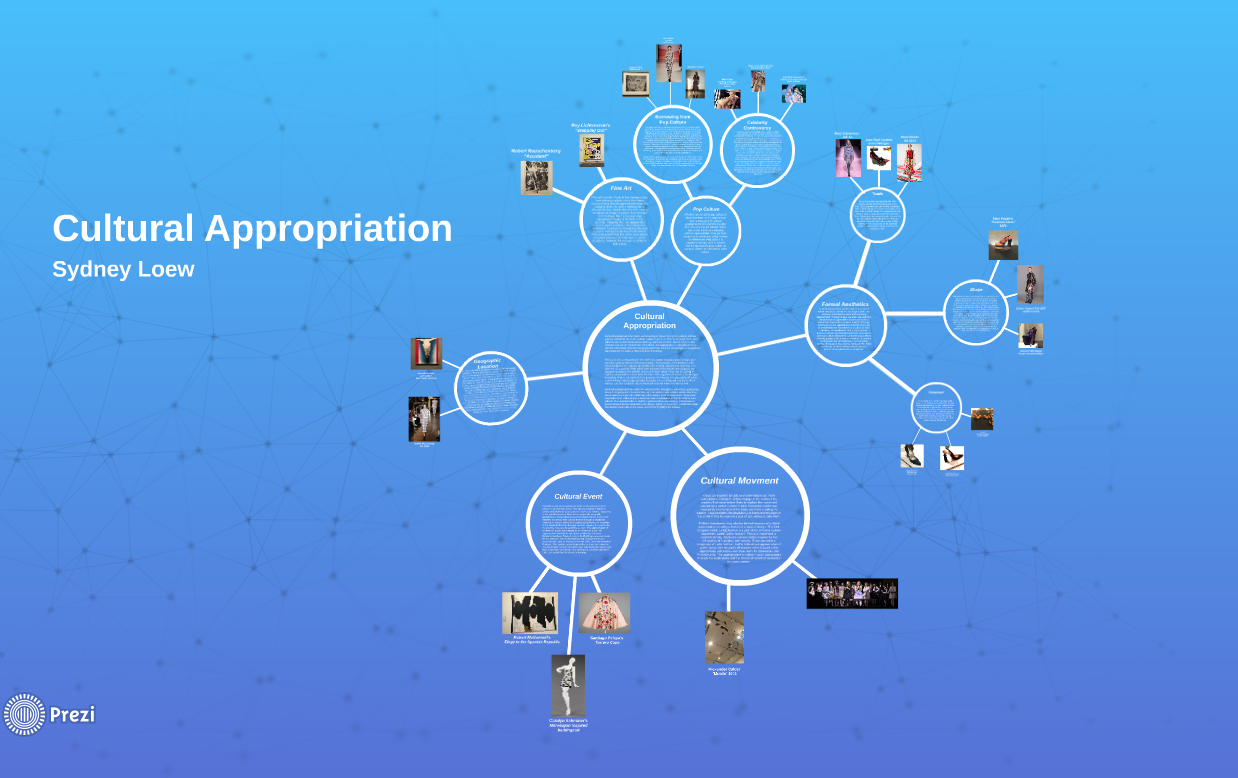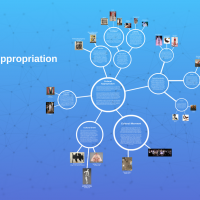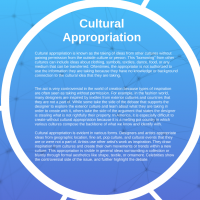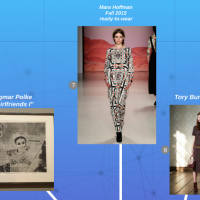Cultural Appropriation Prezi:
http://prezi.com/0cwkwvbtxsva/?utm_campaign=share&utm_medium=copy&rc=ex0share
My topic, cultural appropriation, is an in depth theme that explores various different facets of design and culture. This theme is not what I originally set out to focus on. I had the idea to appropriate ideas from two different cultures and mix them into a garment. This idea of appropriating culture led me to fully explore the controversial theme. My topic definitely changed as I explored it more. The facts and designs remained unchanged, but my perspective on the topic did. For example, I thought that appropriating images from previous artists and using them in one’s work would be unfair copying. My idea changed on this issue because artists use works as inspirations or direct medium to work with in a new method like collaging a reproduction of a famous artist’s piece. The topic changed because it became broader and more political than I had intended. I researched a lot about the debates and backlash surrounding cultural appropriation in the design world. I think I also condensed the topics that I started with as I made the map because the images that I used could fit into more than one category sometimes. I was going to create another subtopic about designers combining two different cultures, but then I realized that every work that deals with cultural appropriation is combining two cultures whether it is varied ideas from the past with the present or one idea from the past with the present.
I broke down cultural appropriation into the subcategories: pop culture (celebrity controversy, and borrowing from pop culture), formal aesthetics (shape, texture, and ornament) , cultural event, cultural movement, geographic location, and fine art. I first accumulated all of my research and images and divided them into subcategories after. A lot of the debate and controversy about the subject had to do with celebrities because of costumes that are not culturally appropriate or because they are in the spotlight and often are ridiculed more for appropriating when every person does so. The other subcategory of pop culture is borrowing from pop culture because certain works of art take direct pieces of pop culture like newspapers and incorporate them or because other works are inspired by movies or cultural icons. Another subtopic, geographic location, seemed to work well with images from certain artists that pull from their travels or places. This included Georgia O’Keefe’s paintings about the Southwest. Cultural event is a subcategory that is prevalent in design because of globalization. Many works are inspired by cultural events in alternate countries or cultures today because we are so globally connected. This topic allows for cultural appropriation to occur so seamlessly, as the world becomes a melting pot like the United States. Cultural movement is another subcategory that can be further broken down. Artists are inspired by cultural movements from the art world like surrealism or Dadaism and copy the masters before their time. Also in this topic, people appropriate cultural styles or ideas from historical times, only to renew them in a way that it becomes re-popularized in a new style. This holds true for the Lolita fashion aesthetic, which I learned about in my research. The formal aesthetics is a means through which cultural appropriation is visible. We see appropriation in form of ornament, silhouette, and textile constantly. Finally, I decided to give fine art its own category because people see cultural appropriation in fine art as imaginative and just, while they hypocritically think that designers are unjust in their appropriations.
After researching and developing the topic of cultural appropriation, I am more aware of the controversy surrounding the subject. I also think it is important to understand the difference between inspiration and appropriation. Is there a difference between the two? Does loosely basing inspiration off of a painter and referencing it in a fashion collection make it appropriation? If a designer is engaging and learning about a culture, is it the only way to gain acceptance and the rights to use that culture’s ideas? I think these questions are critical in studying cultural appropriation, but I also think that these answers are open-ended because individuals can have their own opinions on them. I think that inspiration is appropriation; but I also think that appropriation is fair because we, as designers, take from what is around us in order to reinvent and translate the world how we see it through our personal lens.



